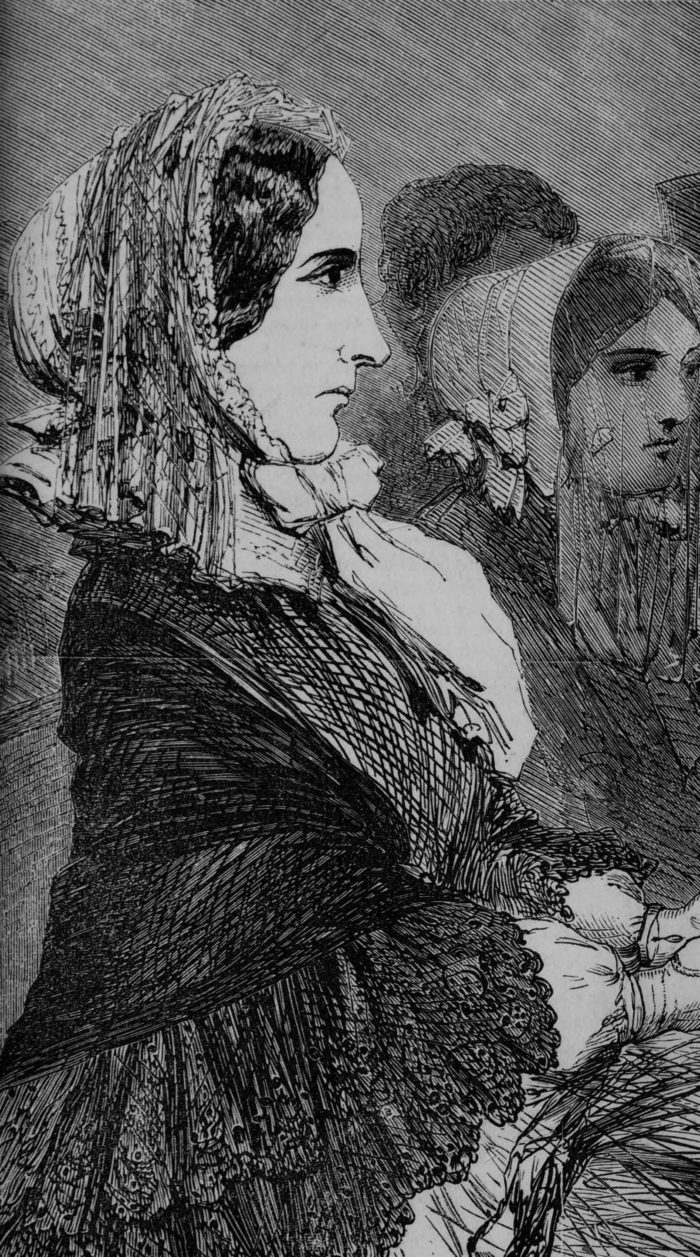The Secret Life of Arsenic
Posted on January 31, 2022
by Neil Bradbury, Ph.D.
Quick, think of a poison…
There’s a good chance that you came up with arsenic. Arsenic was first isolated by the famous alchemist Albertus Magnus in the thirteenth-century city of Cologne. By a strange coincidence, Cologne was named after the power-hungry Roman Empress Agrippina, who amassed her power by eliminating any competition by poisoning them with a white powder, which later turned out to be arsenic.

From left: Cesare Borgia, Lucrezia, Pope Alexander, and a young man holding an empty glass.
This image is in the public domain via Wikicommons.
In the Renaissance, arsenic poisoning became a favorite of the Borgias, who used it to become one of the wealthiest and most powerful families in Europe. Rumors regarding the preparation of a poison called La Cantarella included spreading arsenic on the entrails of a slaughtered pig, and letting the whole mess dry to a goo, which could then be slipped into food and drink. By the seventeenth century, arsenic poisoning was so rampant, among the elite of French society, that it was known as ‘poudre de succession” or inheritance powder. In the 1930s, the realization that arsenic could be coupled with organized crime and life insurance payouts led to a mini-epidemic in working-class spousal poisonings. In what became known as the Great Arsenic Murder Ring of South Philadelphia, 24 people were convicted of arsenical murders to collect life insurance payouts.
Despite the close association of arsenic with murder, there are other sides to this chemical, including home decoration and medicine. The Victorians were the first to see the home as a sanctuary. Things were acquired to turn houses into homes, and not unlike today’s numerous television home improvement shows, the Victorians were awash with household guides and magazines, informing the reader of what was tasteful and fashionable. Yet, what went unnoticed was that these same sought-after items were secret killers. One sign of good taste and being modern was wallpaper, and the bolder the colors and more garish the pattern the better. Houses were getting gas lighting which meant that there was enough light for people to actually see and enjoy the vivid colors of wallpaper. Cassell’s Household Guide, one of the main influencers of taste, identified green as a desired wall color. One particularly vibrant green was a color called Scheele’s Green. So impressive and in-demand was the dye, that it was used in everything from dresses to children’s toys and even as a food coloring. But perhaps most importantly, it was in wallpaper. And as more homes had wallpaper, there were increasing newspaper accounts of unexplained illnesses and deaths in the home, including a six-month-old who died after chewing on green wallpaper. The thing that gave wallpaper its vibrant green color was, in fact, arsenic. As well as eating the paper, wallpaper was killing homeowners in a more insidious and invisible way. Dampness in Victorian rooms provided an ideal environment for mold to grow on the wallpaper, and the paste holding it to the wall. The mold broke down the green arsenic dyes and released arsenic gas into the very air that was being inhaled. While doctors and newspapers campaigned for a prohibition against arsenical wallpaper, other experts were quick to downplay the dangers. In the end, arsenical wallpaper didn’t need to be banned. Consumers simply stopped buying it, and wallpaper manufacturers started advertising their new products as arsenic-free.

Courtesy of the Wellcome Foundation collection
During the 1850s, reports of Austrian peasants eating arsenic to give them a healthy porcelain-like complexion swept through Europe and America. An 1898 article in the San Francisco Call, noted the wonderful effectiveness of the natural arsenic found in cucumbers “to bleach the skin and eliminate those unsightly freckles.” The New York Times opined that the “natural arsenic in the cucumber makes it valuable as a skin whitener.” Cucumbers don’t actually contain arsenic and the origin of the myth is totally unknown. Did the green of cucumbers remind people of Scheele’s green? By 1889, anyone wanting “compelling admiration” could avail themselves of “Dr. Campbell’s Arsenic Complexion Wafers” which would “transform the most sallow skin into a radiant health.” While the use of arsenic in cosmetics is now prohibited, the many blogs and video postings of contemporary beauty tips, suggest that for marketing, very little has changed since Victorian times.
Along with its use in cosmetics, arsenic was also used as a cure-all for many conditions afflicting the body. During the eighteenth century, Thomas Fowler promoted a therapy for a multitude of diseases, including malaria, hypertension, ulcers, and cancer. The liquid, known as Fowler’s Solution was made from arsenic, and thoughtfully, lavender extract, to make it appear more medicinal. Fowler’s Solution was employed for over 150 years, as late as the 1940s. Arsenic’s reputation as a therapeutic was boosted in 1910 when Nobel laureate Paul Ehrlich developed a treatment for syphilis using arsenic, and even as late as 2000, a drug based on arsenic was approved as an effective therapy for leukemia.
Despite arsenic’s historic and well-deserved infamy as a deadly poison, there is clearly also a secret life to arsenic, and with the possibility of arsenic being used in modern medicine, perhaps its tarnished reputation may now be somewhat rehabilitated.
No comments:
Post a Comment